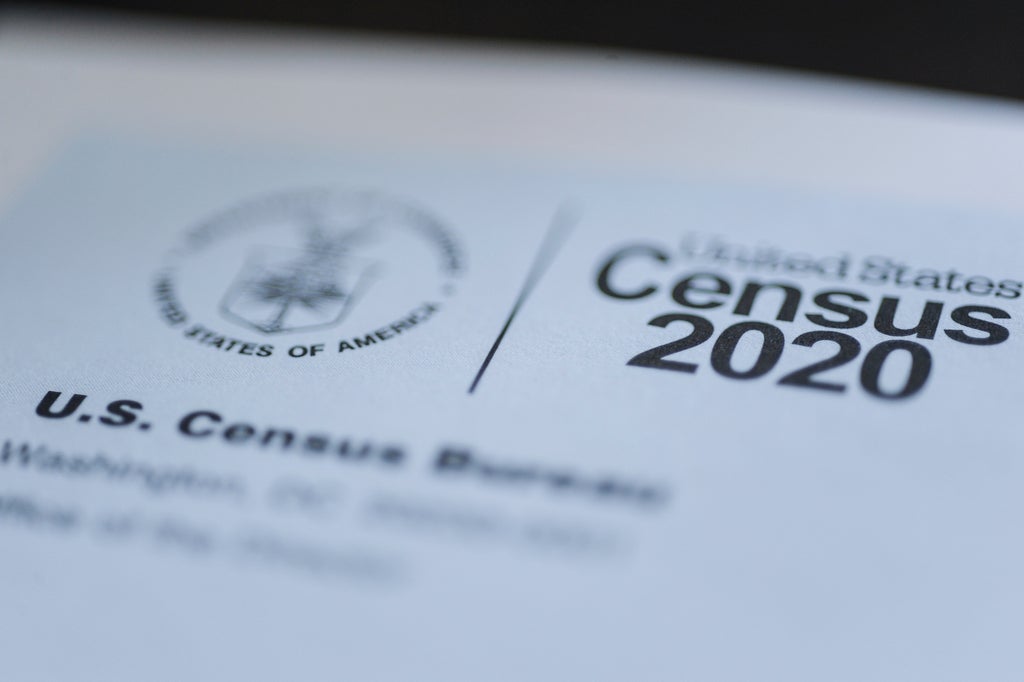
EDITORS/NEWS DIRECTORS:
The U.S. Census Bureau has released results from a survey showing that 14 states were inaccurately counted during the 2020 census.
Since the once-a-decade U.S. head count determines how many Electoral College votes and House of Representative seats each state gets, as well and how federal funding is distributed each year, the consequences of these undercounts and overcounts will be felt in terms of political power and resources through the next census in 2030.
Six states were undercounted, and eight states were overcounted.
Here are some background details — and potential questions — you can use in your own reporting on how well residents of the 50 states and District of Columbia were counted, potentially to run alongside the AP story, US--2020 Census, which moved Thursday.
WHICH STATES WERE INACCURATELY COUNTED?
Arkansas, Tennessee, Mississippi and Florida respectively had undercounts of 5%, 4.8%, 4.1% and 3.5%, while Illinois and Texas each had undercounts of 1.9%. On the flip side, there were overcounts in Hawaii, at almost 6.8%; Rhode Island, at 5%; Delaware, at 5.4%; Minnesota, at 3.8%; New York, at 3.4%; Utah, at almost 2.6%; Massachusetts, at 2.2%; and Ohio, at almost 1.5%.
In the remaining 36 states and the District of Columbia, the overcounts and undercounts were not statistically significant.
WHAT ARE UNDERCOUNTS AND OVERCOUNTS?
Undercounts signal people were missed. Overcounts suggest they were counted more than once, as for example, children of divorced parents who share custody or people with vacation homes. Historically, groups that have undercounts are racial and ethnic minorities, renters and young children. Lack of internet access and the amount of resources that states devoted to encouraging residents to fill out the census form also may have played roles in the undercounting of residents in these primarily Southern states.
WHAT IS THE IMPACT?
States that did a better job of getting residents counted scored greater Electoral College and congressional representation, or did not lose expected seats in the House of Representatives. They also are now better positioned for the annual distribution of $1.5 trillion in federal funding in the coming decade.
Nothing can be done at this point to change how many congressional seats are allocated among the states, and neither can the data used for redrawing congressional districts be adjusted.
Academics and civil rights leaders are pressing the Census Bureau to tweak yearly population estimates that traditionally have used census numbers as their foundation, and incorporate other data sources to produce a more accurate portrait of the undercounted racial and ethnic communities for the numbers that help determine the distribution of federal funding. The Census Bureau has set up a team to explore this.
STORY IDEAS
— Find out how much federal funding your community gets and what is the breakdown for schools, roads and other programs that rely on federal funds. A good place to start is a report put out by George Washington University's Institute of Public Policy: https://gwipp.gwu.edu/counting-dollars-2020-role-decennial-census-geographic-distribution-federal-funds.
Also, talk to city or transportation planners or your mayor's office about how federal funding impacts important projects in your community and how changes in the population count would change that funding.
— Determine if certain populations were undercounted or overcounted in your community.
The Census Bureau isn't releasing data on undercounts and overcounts below the state level, and it did not break down by demographic traits how good a job the 2020 census did at the state level. But a national report card in March showed significant undercounts of the Black and Hispanic populations, as well as well as those identifying as some other race and American Indians and Native Alaskans living on reservations.
A good start for making comparisons is checking the demographic profiles of your community from the 2020 census with other estimates like the Census Bureau's American Community Survey 5-Year release or those put out by state researchers, such as the Bureau of Economic and Business Research for Florida. If there are noticeable differences in these data sets broken down by demographics, then there's a good chance these populations were undercounted or overcounted. Just remember, look for significant differences. Small discrepancies are expected since different methodologies are used.
— Find out if your community believes it was counted accurately during the 2020 census and whether it plans to file an appeal. The Census Bureau has set up a program allowing communities to challenge their 2020 census results. So far, more than two dozen cities, towns, tribal areas and villages have filed appeals with the Count Question Resolution operation, and communities have until the middle of next year to file their challenges.







